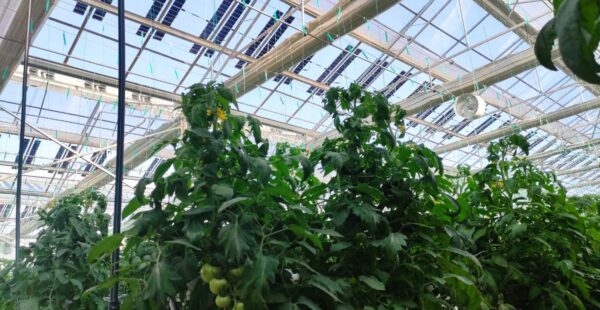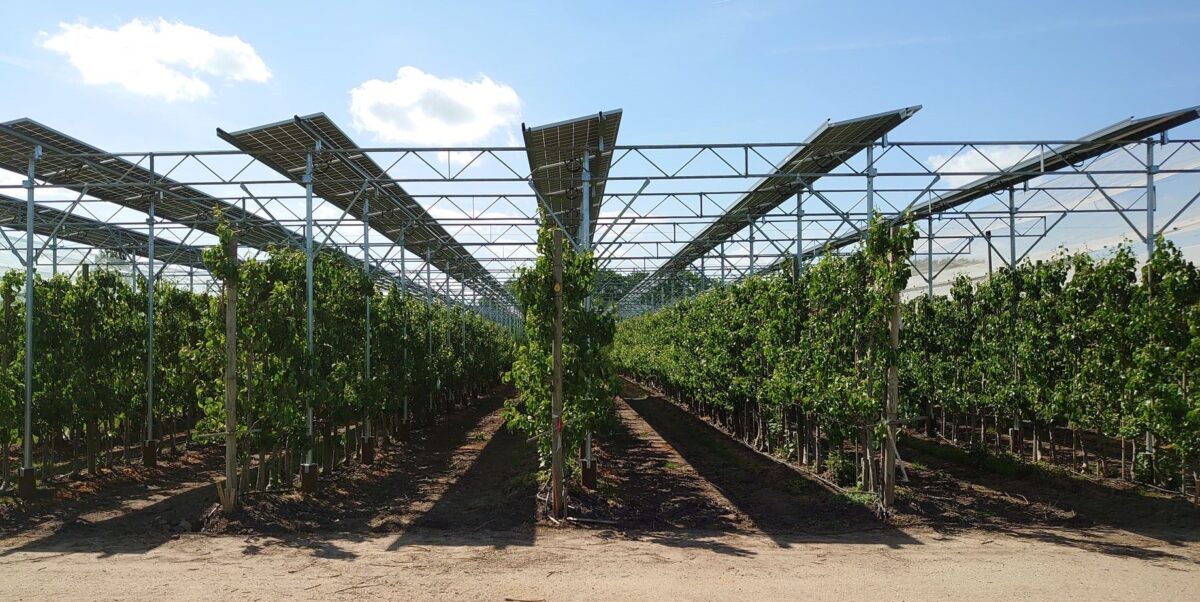Greece-based specialty solar module manufacturer Brite Solar has developed bifacial photovoltaic panels for applications in agrivoltaic greenhouses and canopies.
The modules are based on novel glass coating materials and deposition technology developed by Brite Solar itself. The coatings are placed onto the front and back of the top glass in standard glass-glass monocrystalline silicon solar modules.
“By combining our novel coatings with silicon-based solar cells, we have optimized technology suitable for greenhouse applications and crop protective structures, such as canopies, in open-field farming. Early installations have produced extremely promising results,” Brite Solar CEO, Nick Kanopoulos, told pv magazine.
He explained that one of the coatings has both anti-reflective and hydrophobic properties. It is deposited on the outside of the top-side glass. “The other coating is deposited on the inside of the same glass panel to downshift ultraviolet light. To downshift means that the ultraviolet light is absorbed by the coating and then emitted on the other side in the red region of visible light where it can be used by both plants and solar cells,” added Kanopoulos, noting that ultraviolet light is not required by plants nor solar cells.
“Our products are optimized for crop protection and crop yields. Power generation is important as a source of income or self-use, but it is secondary to farming,” said Kanopoulos, making the point that Brite Solar panels have a lower power rating, compared to similarly sized conventional modules, because they are optimized for photosynthetic energy needed for plant growth.
Other benefits of the panel technology claimed by the Greek company include crop protection from adverse weather conditions, collection of rainwater, and reduced water evaporation volume.
In January, Brite Solar announced an €8.6 million ($9.26 million) series A round of venture capital to build a manufacturing line in Patras, Greece, which will have an initial capacity of 150 MW. It has plans to eventually double it to 300 MW. Until now, Brite Solar has produced its products with contract manufacturing partners in China and India.
Popular content
It had a low-key launch of its first products a little over a year ago, marketing to large farming cooperatives, project developers, and specialized installers. Meanwhile, it developed pilot projects located in Canada, Germany, Greece, Indonesia, Netherlands, the United States, France, Spain, Romania and Singapore, according to Kanopoulos.
“The production line combines the coating and the agrivoltaic panel assembly in a single, fully automated manufacturing line,” said Kanopoulos, adding that the equipment is supplied by European equipment manufacturers. “We adjust the panel transparency to the target crop’s light requirements and the geographic location of the farm. A pear crop in Greece has quite a different year-round irradiation profile compared to one located in Germany.”
Brite has protected its technology with patents in the European Union, China and the US, which are its three focus markets at the moment.
The venture capital round was led by Greece-based New Energy Partners, joined by early investors, European Innovation Council Fund, Brace Agri Solar Holdings of Luxembourg, and Deep Investments Limited of Malta, according to Kanopoulos.
 Image: Brite Solar
Image: Brite Solar
This content is protected by copyright and may not be reused. If you want to cooperate with us and would like to reuse some of our content, please contact: editors@pv-magazine.com.


3 comments
By submitting this form you agree to pv magazine using your data for the purposes of publishing your comment.
Your personal data will only be disclosed or otherwise transmitted to third parties for the purposes of spam filtering or if this is necessary for technical maintenance of the website. Any other transfer to third parties will not take place unless this is justified on the basis of applicable data protection regulations or if pv magazine is legally obliged to do so.
You may revoke this consent at any time with effect for the future, in which case your personal data will be deleted immediately. Otherwise, your data will be deleted if pv magazine has processed your request or the purpose of data storage is fulfilled.
Further information on data privacy can be found in our Data Protection Policy.